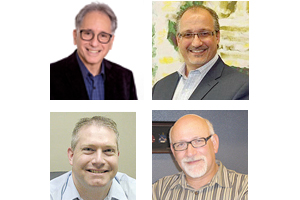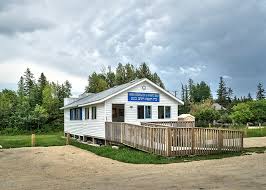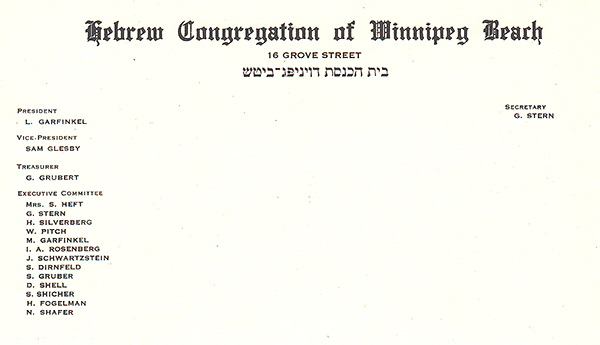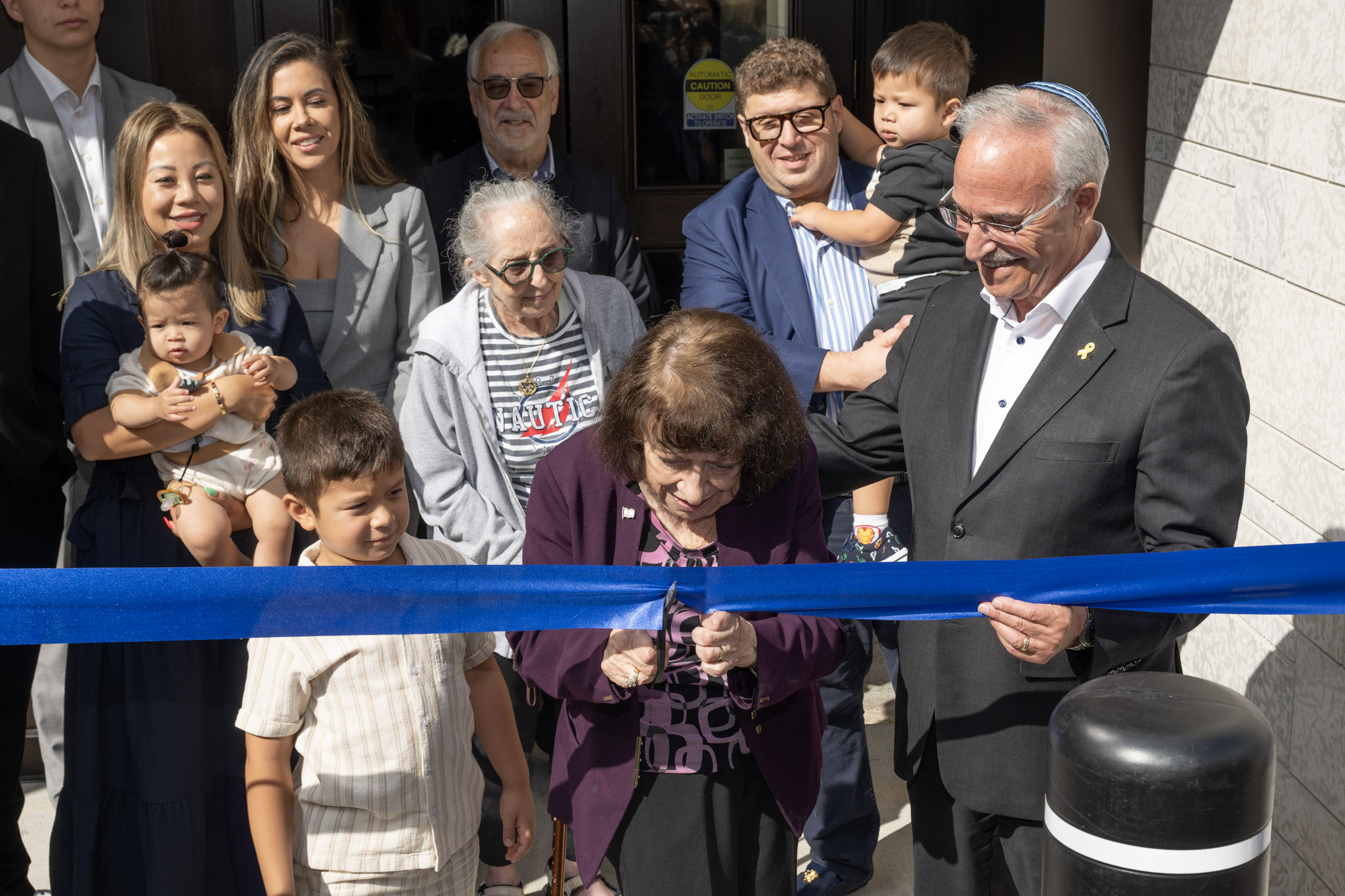Local News
Covid situation presents synagogues with opportunities as well as challenges

By MYRON LOVE
These are trying times that we are living through. And certainly, our communal religious institutions – having been prevented from convening services for these past few months – have faced their share of challenges. But, as rabbis and synagogue spokespeople have pointed out in a series of interviews, there have also been new opportunities that have presented themselves that may never have occurred without the challenges.
“We have been trying to reach out to our community in different ways,” says Rabbi Allan Finkel, Temple Shalom’s spiritual leader. “For example, people can tune in to our live stream free of charge. We are streaming services three or four times a week and are attracting many more people than would be coming for services. People – some of whom may have disabilities or be reluctant to go out in wintry weather – can join in from the comfort of their homes.
“We are finding that we are attracting many people who are former members of our congregation or who are unaffiliated.”
He adds that his online “Introduction to Judaism” class has more students than his previous in-person classes. Among those signing on are a couple from Moose Jaw who aren’t Jewish but who are interested in learning about our religion.
Finkel points out how well the rabbis who are members of the Winnipeg Council of Rabbis are working together.
He also notes that he has initiated – for the first time – discussions with the other Reform Congregations in western Canada toward some joint programming. The idea came out of a Chanukah program online that brought together cantors from Reform congregations across the country. (“It was an incredible musical production,” he says.)
“The restrictions arising from Covid have encouraged us to think out of the box,” he says of the discussions with his colleagues in western Canada. “It opens up many new possibilities that we not have recognized before.”
He also expresses his appreciation to the Jewish Foundation of Manitoba, the Jewish Federation of Winnipeg and the federal government for providing grants which have helped make up to some degree the shortfall in funding due to Covid restrictions.
“While we miss coming together and meeting up with each other, we have to count our blessings,” Finkel observes.
“The really sad part is that no one is coming into our building,” notes Ian Staniloff, executive director of Congregation Shaarey Zedek, our community’s leading synagogue. “Still, we are coping as well as we can and membership has been very supportive.”
The Shaarey Zedek had a head start on our community’s other shuls in developing an online presence. Services have been simultaneously streamed for people at home for several years now.
“Our presence online is outstanding,” Staniloff reports. “We continue to offer Shabbat services as well as weekday services and educational programming online.”
And although the Covid lockdown has meant that there are no life cycle events for the catering department to prepare, Staniloff notes that the kitchen staff has been preparing take-out meals for any and all occasions or no occasion. “We organized a pre-Christmas Chinese supper, as an example,” Staniloff points out. “We filled 270 orders. We had cars lining up to pick up their orders.
“We have a Shabbat supper coming up. We are expecting as many as 70 families to be participating. For anybody who wants to order from our kitchen, you just have to give us a little notice.
“We are looking forward though to the day when we can get back to normal.”
Congregation Etz Chayim, our community’s second largest synagogue, is also providing some takeout catering for yom tovim and Shabbat, as well as offering online services and classes. Our next class is scheduled to begin near the end of January,” reports Jonathan Buchwald, Etz Chayim’s executive director.
He notes while it has been “tough” these past ten months, the membership has been supportive. “People are paying their dues and still making donations,” he says.
He adds that a group of member volunteers has been put together to reach out and help more vulnerable members of the congregation in buying groceries, for example, or picking up medication or making friendly phone calls.
South Winnipeg’s two Orthodox congregations – while they cannot provide Shabbat services electronically – are also reaching out online as much as they can. The Lubavitch Centre continues to offer catering out of its kitchen as well as classes via Zoom.
“We have continued to operate our daycare and school throughout,” says Rabbi Avroham Altein.
The Adas Yeshurun Herzlia is offering classes online as well as weekday services. “It’s not the same on Zoom as praying together in person,” says Rabbi Yossi Benarroch. “We don’t say kaddish or repeat the kidushe. But we are still praying together.”
For Chanukah, Benarroch and the congregational leaders arranged a Zoom Chanukah party featuring the rabbi with his family in Israel. “We had maybe 130-140 people participating. It was 8:00 P.M. Israel time, noon in Winnipeg. My family lit the Chanukah candles and one of my daughters led a workshop on how to bake a Moroccan donut. (The Benarroch family is originally from Morocco.) Then, we had Zoom breakout sessions including some kids activities.
“We are planning to do something similar for Tu B’Shvat.
“It has been difficult, but our members understand.”
Because of Covid restrictions, the Chevra Mishnayes Congregation in Garden City is trying something different for its AGM at the end of the month. “We are going to have our AGM online this year,” notes congregation president Marshall Kneller.
While the congregation cancelled all services after the latest lockdown was imposed, Kneller suggest that if the lockdown continues for much longer, the membership may want o reconsider the possibility of having services online.
There are three small Orthodox shuls in the North End: the Chavurat Tefila, Talmud Torah/Beth Jacob and House of Ashkenazi. With few members, no office staff and lacking online capability, the congregants who attend the shuls can only hope that the lockdown doesn’t continue too much longer.
Local News
Thank you to the community from the Chesed Shel Emes

We’re delighted to share a major milestone in our Capital Campaign, “Building on our Tradition.” Launched in November 2018, this campaign aimed to replace our outdated facility with a modern space tailored to our unique needs. Our new building is designed with ritual at its core, featuring ample preparation space, Shomer space, and storage, creating a warm and welcoming environment for our community during times of need.
We’re grateful to the nearly 1,000 generous donors who contributed over $4 million towards our new facility. A $750,000 mortgage will be retired in November 2025, completing this monumental project in just seven years.
We’re also thrilled to announce that our Chesed Shel Emes Endowment Fund has grown tenfold, from $15,000 to $150,000, thanks to you, the Jewish Foundation of Manitoba’s FundMatch program, and Million Dollar Match initiative in 2024. Our fund helps ensure that everyone can have a dignified Jewish funeral regardless of financial need.
As we look to the future, our goal remains to ensure the Chevra Kadisha continues to serve our community for generations to come. Our focus now shifts to replenishing our savings account and growing our JFM Endowment fund.
We’re deeply grateful for your support over the past several years.
It’s our privilege to serve our community with care and compassion.
With sincere appreciation,
Campaign cabinet: Hillel Kravetsky, Gerry Pritchard, Stuart Pudavick,
Jack Solomon, and Rena Boroditsky
Murray S. Greenfield, President
Local News
Winnipeg Beach Synagogue about to celebrate 75th anniversary

By BERNIE BELLAN (July 13) In 1950 a group of cottage owners at Winnipeg Beach took it upon themselves to relocate a one-room schoolhouse that was in the Beausejour area to Winnipeg Beach where it became the beach synagogue at the corner of Hazel and Grove.
There it stayed until 1998 when it was moved to its current location at Camp Massad.
On August 2nd members of the synagogue will be holding a 75th anniversary celebration.

As part of the celebration anyone who is a descendant or relative of any of the original members of the first executive committee (as seen in the photo here) is invited to attend the synagogue that morning.
If you are a relative please contact Abe Borzykowski at wpgbeachshule@shaw.ca or aborzykowski@shaw.ca to let Abe know you might be attending or for more information about the 75th anniversary celebration.
We will soon be publishing a story about the history of the beach synagogue, which is something I’ve been writing about for over 25 years.
Local News
Vickar Family cuts ribbon on new Tova Vickar and Family Childcare Centre

By MYRON LOVE In the words of Larry Vickar, the Shaarey Zedek’s successful Dor V’ Dor Campaign “is not only a renewal of the synagogue but truly a renewal movement of Jewish life in our community.”An integral part of that renewal movement was the creation of a daycare centre within the expanded synagogue. On Monday, June 23, Larry and Tova Vickar cut the ribbon, thereby officially opening the Tova Vickar and Family Childcare Centre in the presence of 100 of their family members, friends and other supporters of the project.
The short program preceding the morning ribbon-cutting began with a continental breakfast followed by a welcome by both Fanny Levy, Shaarey Zedek’s Board President, and Executive Director Dr. Rena Secter Elbaze. In Elbaze’s remarks, she noted that Larry and Tova wanted their family (including son Stephen and family, who flew in from Florida) and friends at the event to celebrate the opening of the Tova Vickar and Family Childcare Centre, “not because of the accolades, but because, as Larry put it, he hopes that their investment in the congregation will inspire others to do the same.”
“When Larry and I spoke about what this gift meant to him and the message he wanted people to take away,” she continued, “I couldn’t help but connect it to the teachings of Reb Zalman Schachter-Shalomi whose book – Age-ing to Sage-ing – changes the whole way we look at the concept of ageing and basing it on our ancestral teachings.”
She explained that his concept of “Sage-ing” is based on three key ideas – Discover your meaning and purpose; accept our mortality and think about the legacy you want to leave.
“Larry spoke about these exact concepts when we met,” she said.
Elbaze also noted the presence of Shaarey Zedek’s newly-arrived senior Rabbi Carnie Rose, former Rabbi Alan Green, and area MLAs Mike Moroz and Carla Compton.
Larry Vickar expressed his great appreciation for all those in attendance. “Tova and I are deeply moved to stand here with you today for this important milestone in our community”, he said. “We are grateful to be surrounded by all of you, the people we care about, our family and friends… you who have touched our lives and played some part in our journey.”
